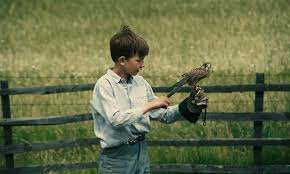Tristana
I am
starting out on the seventies on familiar ground. “Tristana” is a movie by Luis
Bunuel, a director who has been a recurrent feature since the early thirties. I
have lost count on how many of his movies I have watched by now, but it feels
like a lot and my sympathy for them has been… varying. Bunuel for me is best
when he becomes surreal and worst when he is grumpy. I would say “Tristana” is
on the grumpy end of that scale.
Still, for
a movie that does not seem particularly surreal, I find it hard to parse. The
plot is fairly straight forward and seems to lack a point. More likely though,
I simply have not picked it up.
In Toledo,
Spain (a beautiful town I really must visit), Tristana (Catherine Deneuve)
lives with an older man, Don Lope (Fernando Rey), her legal guardian. Don Lope
is out of a noble family, but his support for the poor and his animosity
against actually working means that he has lost almost his entire fortune and
is getting by by selling off the family inventory. Don Lope is supposed to be
an admirable man except in one respect: Women. Them he considers free game and
is certain other me see them the same way. Since Tristana is a young and pretty
girl (she is Catherine Deneuve after all) he sinks his fangs into her and make
her not only his ward but his lover too. Fiercely jealous he bars her from even
leaving the house alone and soon she is royally sick of the old man.
When she
finally gets out of the house, she finds a young painter, Horacio (Franco Nero),
falls in love and run away with him. Skip a few years and she is coming back to
Don Lope’s house. Some illness in her leg makes her think she is about to die
and so she wants to do this in his house, against the wish of Horacio. She does
not die however, only loose her leg, but now she is a bitter woman and sends
away Horacio, marries Don Lope, yet keeps him at an arm’s length, torments him
and eventually kills him (or let him die from his illness rather than call the
doctor).
So, what
was the point of all this? I do not know. I had hoped that the extra material
would have enlightened me, but it only went on about how great it is (as
usual). Wikipedia is not much help either. My (poor) suggestions would be: 1.
Treat your girl nice, she might pay you back big time. 2. Loosing a leg makes a
woman bitter. 3. It is hard to get old when you lose everything you have, virility,
principles and love.
In any case
I am not happy with either of my interpretations and that makes me rather
indifferent to this movie.
Technically
it is better than most Bunuel movies. Hey, it is in color! Deneuve is as usual
a sight for sore eyes and Fernando Rey is as good as ever. Toledo looks very
charming (it snows in Toledo?? I had no idea.) and the filming itself is
excellent.
There is
just that little item about the point of this movie. There are hints that
Bunuel compared the characters to himself and his own family and if that means this
is sort of his family history, then that is pretty messed up.
Is this a
movie to recommend? Well, die-hard Bunuel fans will likely love this movie. Me,
not so much.




